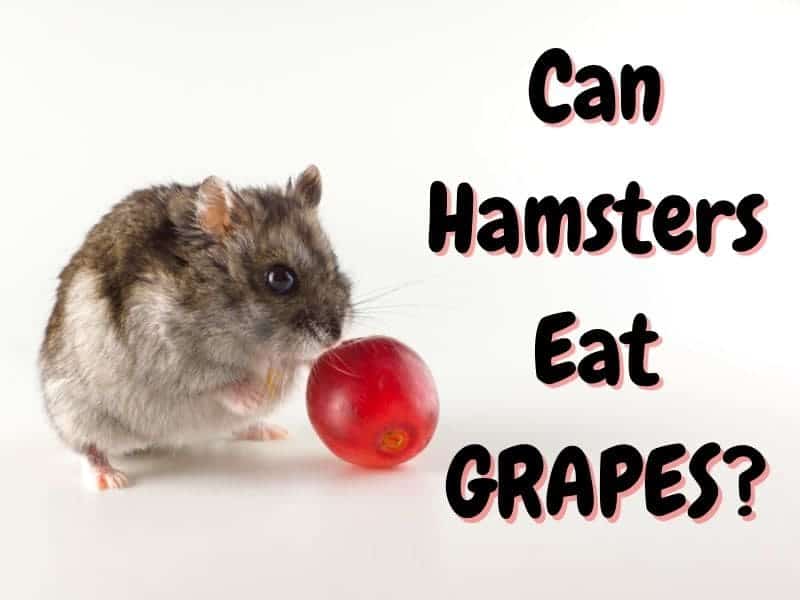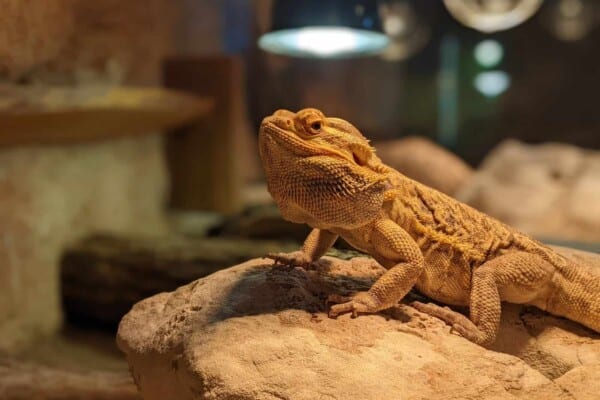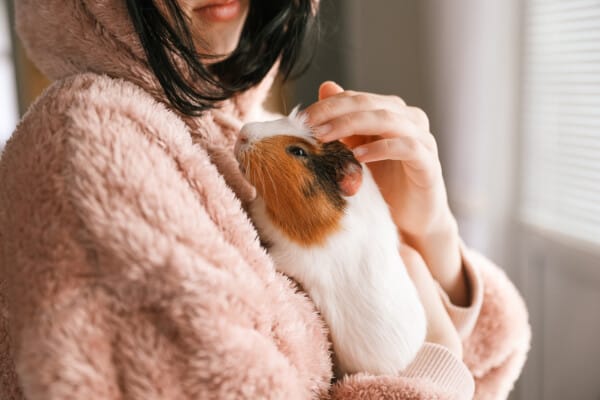If you are the lucky owner of a furry, pocket-sized friend, then you might be wondering what human foods you can feed them. You may have heard that grapes are not recommended for larger pets such as cats and dogs, but can hamsters eat grapes? And the answer is yes, grapes are 100% healthy for hamsters to consume. If you are looking forward to giving your hamster these sweet treats, then please read on.
Are Grapes Healthy For Hamsters?
Yes, grapes are OK to give as an occasional treat for most hamsters, except for the Chinese and Campbell’s Dwarf hamster breeds since these are more prone to developing diabetes.
The rich vitamin K and C content within grapes will aid in limiting your hamster’s chances of blood clots and maintaining a strong immune system, respectfully. In fact, hamsters having vitamin C deficiencies can be quite common, and implementing grapes into your pet’s diet will aid in limiting that.
Much like with humans, when hamsters eat grapes, they will also benefit from an increase in fiber in their diet. Which will, in turn, help their digestive system and limit constipation.
While there is no proven scientific data that supports grapes being detrimental to your hamster’s health, if you are considering implementing this fresh fruit into your hamster’s diet, we always recommend you first consult your veterinarian. Especially since they can provide you with the correct quantity recommendation and information on how often you should feed your hamster grapes.
Grapes for Hamsters: Types, Varieties, and Nutritional Value
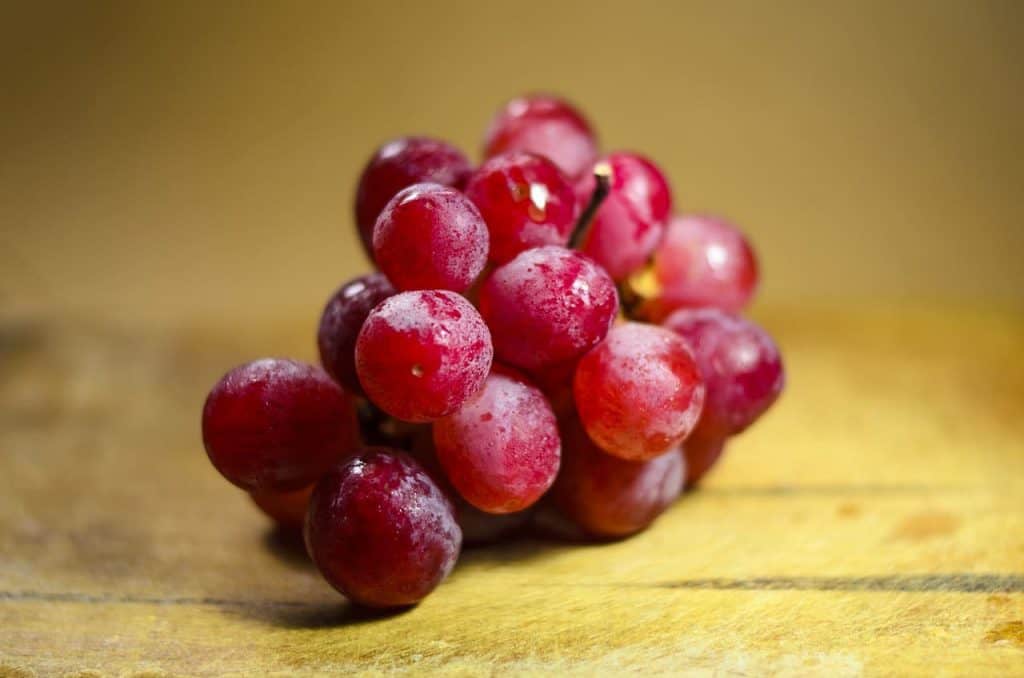
Grapes, which are part of the Berry family, are grown on Grapevines. The sweet fruit dates back over 8,000 years ago, making grapes one of the oldest cultivated plants in the world, but can they be given to hamsters?
Types Of Grapes That Can Be Given Hamsters
While most people categorize the variety of grapes by color, there actually are three main formal groups of grapes. These are:
- Table Grapes: Known for their thin skins. For those looking for a spoiler, these are the grapes that will most often be fed to hamsters.
- Juice Grapes: Contrasting with table grapes, juice grapes have thick skins and are often used in jam or jelly production. These grapes are often sweeter, meaning that they’re less suitable for hamsters who need a relatively bland diet to keep their digestive systems in check.
- Wine Grapes: The sweetest grapes that you will find, obviously used in wine production – and, obviously, a poor choice for hamsters…
Most people, however, will have only consumed table grapes in their natural form. This is because table grapes are the type of grape that you will often find in your local store. Their thin skins make them easy to consume and they are also not too sweet.
Different Grape Varieties Hamsters Can Eat
It is absolutely impossible to create a complete list of the different varieties of grapes. In the state of California alone, according to Taste At Home, there are over 85 varieties of grapes.
Thankfully, you do not need to get too technical when researching the varieties of grapes when looking for which type you can feed your hamster. Any color variety that you can find at your local store will be perfectly fine. Just make sure you pick up the seedless type, as seeds can be choking hazards for your hamster.
Grapes at your local store are often not too sweet for your hamster. Also, the thinner skins on these grapes are better for your hamster too because they’re not as big a choking hazard. That means the best type of grape you can give your hamster is a thin-skinned, de-seeded table grape from your local store.
Nutritional Value Of Grapes For Your Hamster
There are actually a large variety of different health and nutritional benefits to consuming grapes. Even though most consume grapes for their sweet flavors and snackability, you will want to start eating grapes (and feeding them to your hamster) once you find out what is inside of them.
According to Medical News Today, grapes are an excellent source of:
- Protein.
- Potassium.
- Calcium.
- Phosphorous.
- Vitamin C.
- Vitamin K.
- Magnesium.
- Vitamin A.
- Vitamin B.
- Phosphorus.
- Zinc.
And that’s not just for us humans, but your hamsters too. All of these important dietary staples are just as important for your hamster, and grapes have great nutritional value for your furry friend. Not only do grapes have a high nutritional value, but they also help consumers health-wise. As well as preventing a variety of illnesses and health risks. Some of these health benefits include:
- Slowing and preventing the growth of cancerous tumors. This is because of their antioxidant and anti-inflammatory properties which work for both humans and hamsters.
- The same properties that lower your chances of cancer also can help with reducing your blood pressure and help improve your (and your hamster’s) heart health.
- They reduce your risk of constipation because of their high fiber and water content, which is beneficial to your hamster’s digestive system.
- And it has even been proven that by consuming grapes (as well as other select fruit) you can actually lower your risk of developing type 2 diabetes – and diabetes can be a real problem for your hamster.
How To Prepare Grapes For Your Hamster To Consume
Once you have chosen to implement grapes into your hamster’s diet, you need to know the best way to prepare them for your furry friend. Will your hamster eat the skin of a grape? Do you need to de-seed them? Here are a few tips when giving grapes to your hamster:
- Bite-sized pieces: You should definitely cut the grapes into small bite-sized amounts for your hamster to consume. This is a good way to test whether your hamster will like the grapes and ensure that they do not choke.
- Grape with or without skin: In terms of the skin on grapes, you can feed your pet the skin if you desire. It is, however, more popular with pet owners to remove the skin of the grapes. This limits the chance that your hamster has been exposed to pesticides, that are sometimes found on grapes.
- Grape without seeds: There is less of a debate when it comes to seedless vs seeded grapes. Due to the small size of hamsters, the seeds contended within grapes can be a choking hazard, so you should remove the seeds before serving the grapes to your hamster. Alternatively, opt to purchase seedless grapes and you do not have to do the removal process.
Which Colored Grapes Can Your Hamster Eat?
There is currently no scientific data that suggests there is any color of grapes that your hamster cannot eat. So, rest easy with the knowledge that you can feed your hamster either red, green, or black grapes. It is an anthocyanin that is within grapes that affect the coloring of the final product. And there is currently no data that suggests that the chemical has any effect on the health of hamsters.
Can Grapes Be Bad For Hamsters?
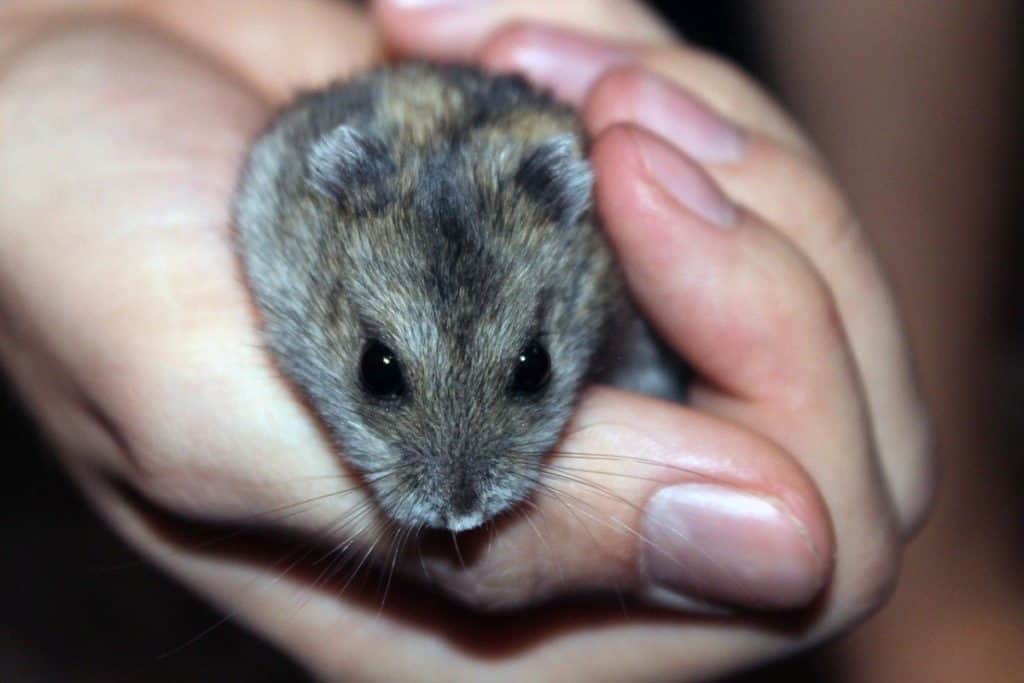
As with everything, the true benefit of grapes can only be seen when given to your hamster in moderation. You should absolutely not, in any circumstance, give your hamster whole grapes. An entire grape to be eaten in one sitting is far too much sugar content for your furry friend to handle and will upset their digestive system, often leading to diarrhea.
This same high level of sugar content can also lead to other issues if you give your hamster too many grapes. Health issues such as diabetes, weight gain, and fatty deposits around your hamster’s liver are just some of them.
The correct amount of grapes to serve to your hamster at any one time is dependent on the size of your hamster. The best course of action is to first contact your vet for advice on how much and how often you should feed your hamster grapes.
Of course, similar to humans, hamsters also have allergies. And there are many, individual, proven cases where hamsters have been allergic to grapes. If this happens to be the case for your hamster, then you must take your pet to see the vet as a matter of urgency. Some key signs to look out for before heading to the vet include:
- Diarrhea.
- Loose stool.
- A distinct loss in appetite.
- Unexplained exhaustion and lethargy.
- Eating bedding and other non-food items.
Obviously, some of these symptoms can be attributed to a hamster having eaten too many grapes, so think about the context before rushing them to the vet in a panic that they’re allergic. You’ll still need to take them to the vet if they’ve had too many grapes, but it’s less serious than an allergic reaction. Remember, allergies to grapes in hamsters may happen, but they aren’t terribly common.
Which Breeds Of Hamsters Can Eat Grapes?
This section will briefly break down which breeds of hamsters can, or cannot, consume grapes. As well as any reason why you should be cautious about feeding them this sweet treat.
1. Syrian Hamsters
The Syrian hamster holds not only the title of the largest breed of hamster but also the breed that can eat the largest amount of grapes. They are also the only hamster that should be allowed to eat one whole grape in a week. Although, it still must be cut up first.
2. Roborovski Hamsters
As the second-largest breed of hamsters, they are able to eat more sweet treats than their smaller counterparts. And grapes are one of the treats they are allowed to have. Although only in moderation as the breed is also susceptible to developing diabetes.
3. Winter White Dwarf Hamsters
With the rule of ‘the smaller the hamster, the less amount of grape they can consume’ being well versed, it is understandable that this tiny hamster can only be given a quarter of a teaspoon of grape once every two weeks.
4. Chinese Hamsters
Chinese Dwarf Hamsters should only be fed a minimum amount of grapes. Many owners actually decide that they will not give their Chinese hamster any grapes, or just a couple of times per year. That’s because Chinese hamsters are at risk of developing diabetes more than any other hamster species.
5. Campbell’s Dwarf Hamsters
Campbell’s Dwarf Hamsters are also prone to diabetes, just not as bad as Chinese hamsters. For this reason, a quarter of a teaspoon of grapes once every two weeks is the general rule to follow.
Can Baby Hamsters Eat Grapes?
If your hamster is under 4 weeks old, then you cannot feed your hamster any grapes. Once they reach that age, you may start giving them tiny bits of seedless grape and increase the quantity over time.
How Often Can Hamsters Eat Grapes?
There is no one rule to follow here, as the larger your hamster is, the greater portion of grapes it will be able to have. But, on average, pet owners tend to start off by giving their hamster an eighth of a grape to see how they react to it. And then gradually increasing to a quarter of a grape either once or twice a week.
Can Hamsters Eat Red Or Green Grapes?
Your pet hamster will actually be able to eat either type of grape. There is currently no scientific data that suggests that the chemicals that work to change the color of a grape’s skin have any negative result on your hamster’s health.
Do Hamsters Have To Be A Certain Age To Eat Grapes?
Yes. You should not feed a hamster that is under the age of 4 weeks grapes in any circumstance.
Are There Any Breeds Of Hamster That Cannot Eat Grapes?
If you have either a Chinese dwarf, white dwarf, or Campbell’s hamster, then you should seek the guidance of a vet before feeding your hamster grapes. This is because these particular types of hamsters are more prone to developing diabetes from sweet treats, such as grapes.
Can Hamsters Only Eat Grape Seeds?
Hamsters should not be given grapes with seeds, as they are a choking hazard. So you need to either give your hamster seedless grapes or de-seed seeded grapes for your furry friend.
How Do I Know If I Have Fed My Hamster Too Many Grapes?
The primary sign that you have fed your hamster too many grapes is if they start having digestive issues, such as diarrhea. You may also notice that your hamster has a reduced appetite. If either of these occurs, stop feeding your hamster grapes and visit your vet as soon as possible.
Related articles
Contents
- Are Grapes Healthy For Hamsters?
- Grapes for Hamsters: Types, Varieties, and Nutritional Value
- How To Prepare Grapes For Your Hamster To Consume
- Can Grapes Be Bad For Hamsters?
- Which Breeds Of Hamsters Can Eat Grapes?
- Can Baby Hamsters Eat Grapes?
- How Often Can Hamsters Eat Grapes?
- Can Hamsters Eat Red Or Green Grapes?
- Do Hamsters Have To Be A Certain Age To Eat Grapes?
- Are There Any Breeds Of Hamster That Cannot Eat Grapes?
- Can Hamsters Only Eat Grape Seeds?
- How Do I Know If I Have Fed My Hamster Too Many Grapes?

